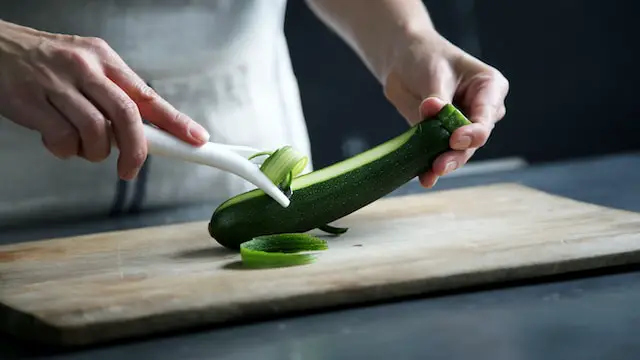As an expert on kitchen safety and renovation, let’s delve into the important considerations when it comes to using your freshly painted kitchen for cooking.
Waiting for the Paint to Cure
After investing time and effort into painting your kitchen cabinets and walls, it’s natural to be eager to get back to regular use. However, exercising patience is essential to ensure a safe and effective paint job. Typically, it is recommended to wait at least 24 to 48 hours before using your kitchen to prepare food. This allows the paint to fully dry and cure, ensuring a durable and long-lasting finish.
Appliances Sealed Off
During the drying period, you may find some of your kitchen appliances sealed off, which can limit your access to certain areas and functions. While this may be inconvenient, it’s crucial not to rush the process. The seal prevents accidental contact with wet paint, ensuring a smooth and even surface.
Emitted Fumes and Their Impact on Food Safety
Freshly painted cabinets and walls can emit fumes, and it’s important to be mindful of their potential effects on food safety. These fumes are not typically harmful when consumed in trace amounts, but it’s always better to err on the side of caution. To protect your food, cover it well and store it away from any painted surfaces.
How To Handle Food Spills Without Damaging Paint?
When cooking in a freshly painted kitchen, accidents can happen. To avoid damaging the paint while cleaning up food spills, follow these helpful tips:
- Act quickly: Attend to any food spills immediately to prevent them from drying and sticking to the painted surface.
- Use gentle cleaning methods: Avoid harsh scrubbing or abrasive cleaners that can damage the paint. Instead, opt for mild dish soap mixed with warm water or specialized kitchen cleaners that are safe for painted surfaces.
- Blot, don’t rub: When cleaning up spills, use a soft cloth or sponge to gently blot the area, rather than rubbing it vigorously. This helps prevent smearing and spreading the food or stain.
- Work from the edges: Start cleaning from the outer edges of the spill and gradually work your way towards the center. This prevents the spill from spreading further and makes it easier to control the cleaning process.
- Test cleaning products: Before using any cleaning product on the painted surface, it’s advisable to test it on a small, inconspicuous area first. This ensures that the cleaner does not cause any damage or discoloration to the paint.
- Avoid excessive moisture: While cleaning, avoid saturating the painted surface with excessive water or cleaning solution. Too much moisture can seep into the paint and cause it to lift or peel.
- Dry thoroughly: After cleaning up the spill, make sure to dry the area completely with a clean, dry cloth or towel. Moisture left behind can lead to water spots or damage the paint.
- Consider protective measures: To minimize the risk of future spills or stains, you can apply a protective coating, such as a clear sealant, over the painted surface. This adds an extra layer of protection and makes it easier to clean up spills in the future.
By following these simple steps, you can effectively handle food spills in your freshly painted kitchen without compromising the integrity of the paint.
Understanding Drying Times and Paint Types
The drying time for paint can vary depending on the type of paint used. Heat-resistant paint, commonly used for stovetop areas, usually dries fully within 24 hours, but always check the specific product’s instructions for precise details. On the other hand, water-based paints and acrylics generally do not produce dangerous fumes during the drying process, making them a safer option for kitchen painting.
Potential Harmful Fumes from Oil-Based Paints
It is crucial to be cautious when using oil-based paints, as they can emit volatile organic compounds (VOCs) during drying. VOCs are chemicals that can be harmful when inhaled in large quantities. Although most paints are considered safe once dried, oil-based paints warrant extra care in terms of proper ventilation.
Dealing with Discomfort from Paint Fumes
Exposure to paint and its fumes can cause irritation to the skin, eyes, and throat. In case of any discomfort, it is advisable to provide proper ventilation by opening windows and using exhaust fans. Taking breaks outside in fresh air can also alleviate any symptoms that arise during the drying process.
Varied Odors of Different Paint Types
The smell of paint can differ depending on the type used, and this may impact your cooking experience. Water-based paints tend to have a lighter scent, which may feel less noticeable even after a few hours of drying. In contrast, oil-based paints can have stronger odors that linger longer, so consider this aspect when planning your cooking schedule.
In Summary
In conclusion, cooking in a freshly painted kitchen is generally safe, but it requires some considerations to ensure both the longevity of your paint job and the safety of your food. Remember these key points:
- Allow ample time for the paint to cure, ideally waiting for 24 to 48 hours before resuming regular kitchen activities.
- Be prepared for sealed-off appliances during the drying process, and exercise patience to achieve a quality paint finish.
- Cover and protect your food to prevent any potential contact with emitted fumes from freshly painted surfaces.
- Understand the drying times and paint types used in your kitchen to better anticipate any associated fumes.
- Exercise caution with oil-based paints, which may emit harmful VOCs during the drying process.
- Prioritize proper ventilation to mitigate any discomfort caused by paint fumes.
- Be mindful of the varied odors of different paint types and their potential impact on your cooking experience.
By following these guidelines, you can confidently enjoy your newly painted kitchen while ensuring a safe and pleasant cooking environment for you and your family. Happy cooking!
